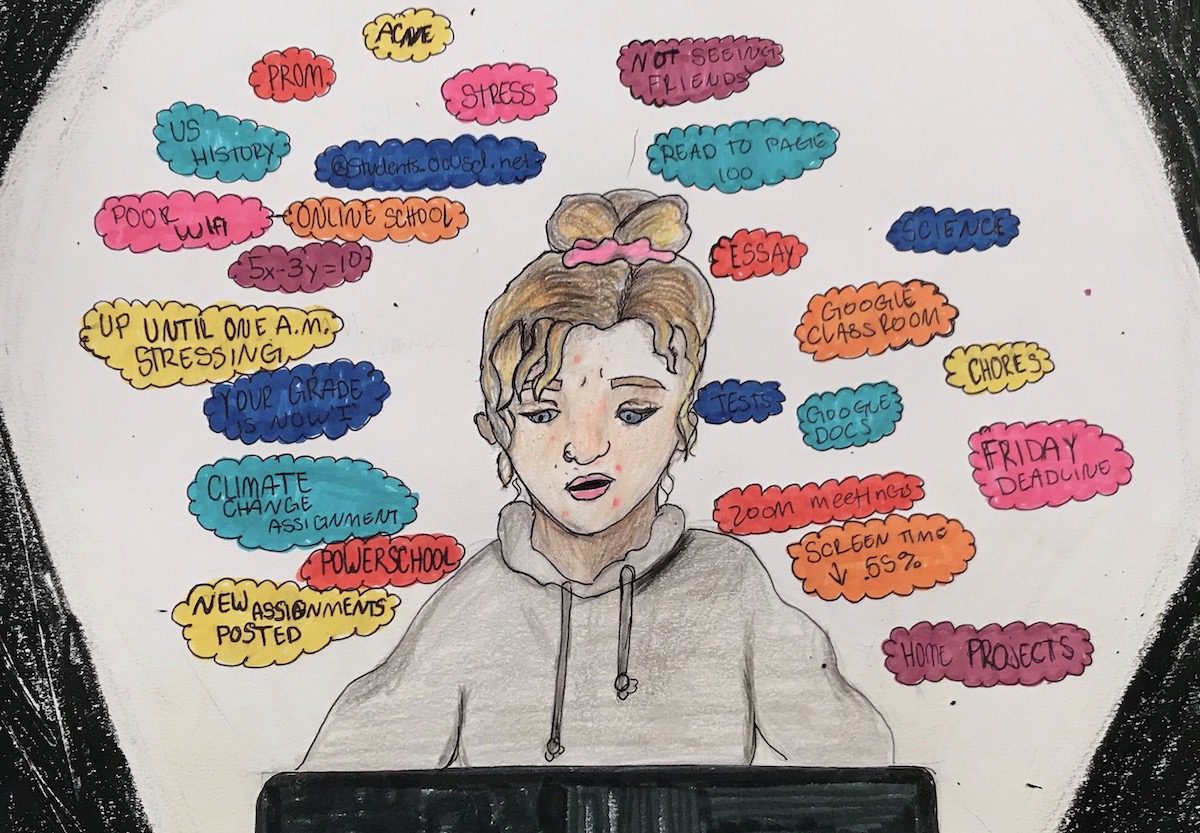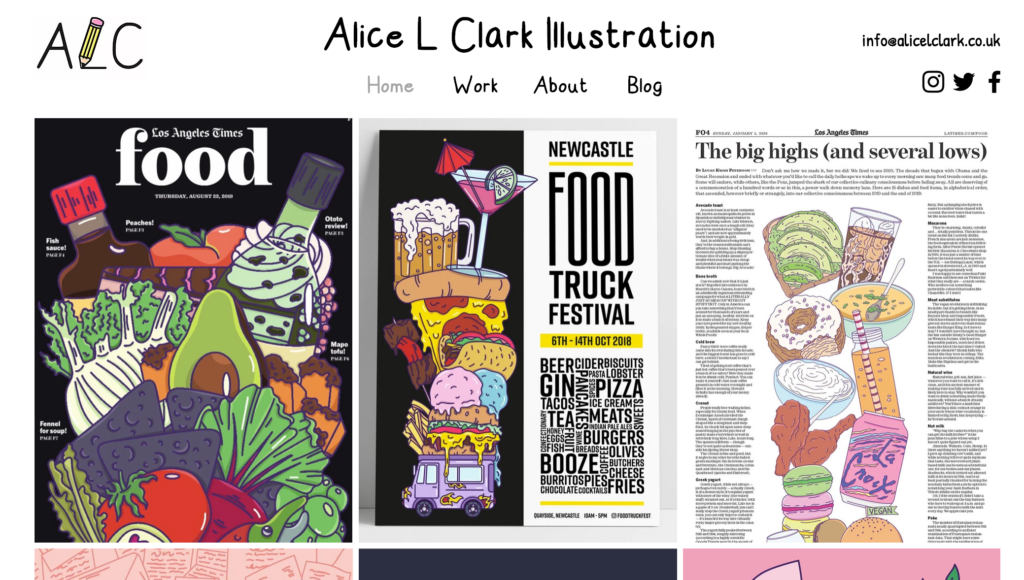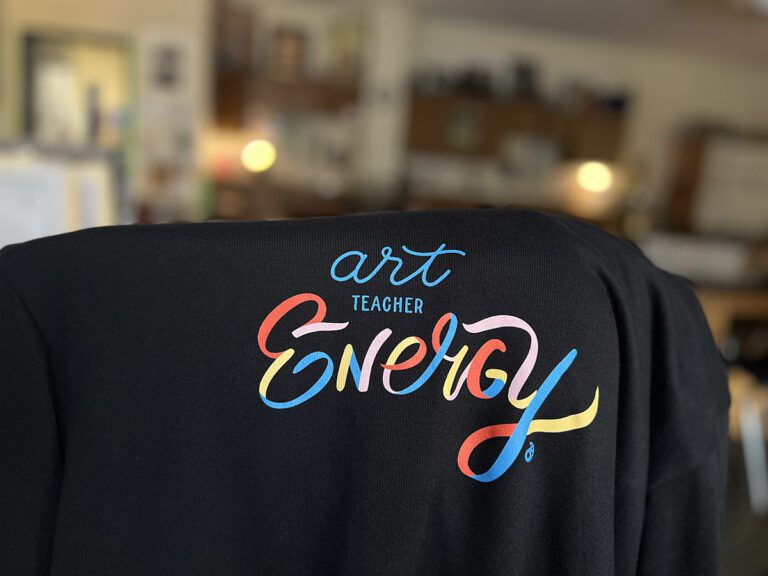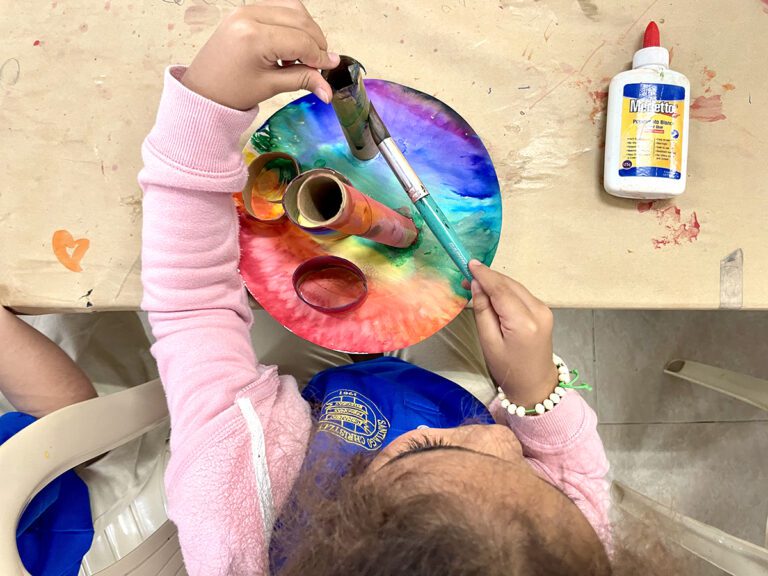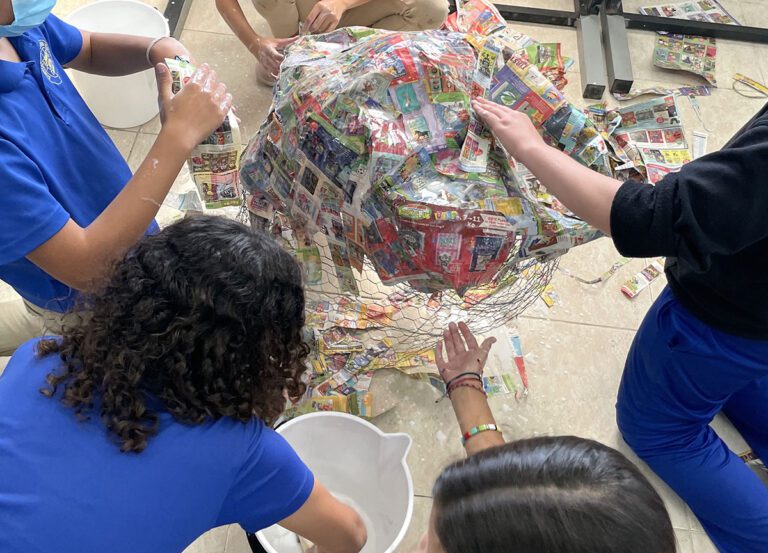Art Education and the Coronavirus (COVID-19)
For many of our students, time away from school is not at all a vacation. They miss the structure and routine of the traditional school day, as well as seeing their friends and teachers regularly. We know that not every student has a positive home life. Unfortunately, school may be the one place they feel safe and cared for.
The abrupt cancellation of school and switch to online learning may not only be difficult to manage academically but can also be a challenge for students’ social and emotional needs. Art has the unique capability of allowing students an opportunity to express themselves creatively. As their art teacher, you can develop lessons that encourage expression and ask them to think about their own feelings and experiences as they produce artwork.
3 Ways to Address Social/Emotional Needs through Online Learning
Gratitude Illustration
Students may find themselves experiencing high anxiety, depression, and fear as they are away from school. Those constant figures and routines are no longer there to support them, and it may be a difficult transition. Some students may find themselves at home alone for long periods without any support or human interaction at all. This leaves them with a lot of time to themselves with little to do but mull over their already anxious thoughts.
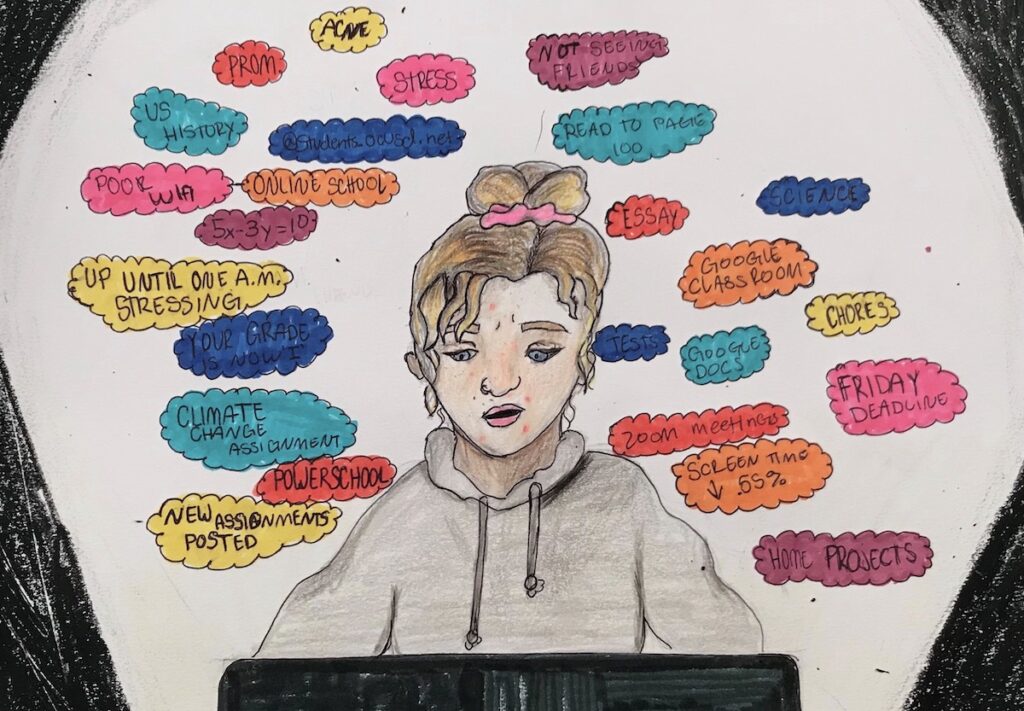
We know creating art can have a positive effect on one’s attitude and emotional state. When you assign a project where students engage their minds in creative thinking, you’re giving them an opportunity to switch into their imagination, problem-solving, and producing modes. One project that can engage your students and lift their spirits is to ask them to identify things in their life they are grateful for.
Learn how to be a better art teacher with PRO Learning.
Ask students to create a list of at least five things they are grateful for. You can give some of your own examples, but be careful not to lead students to copy your suggestions. For each item on their list, they are to illustrate it within one larger composition. The gratitude items should somehow all belong in the same scene rather than five individual sections. Encourage students to create a unified final illustration.
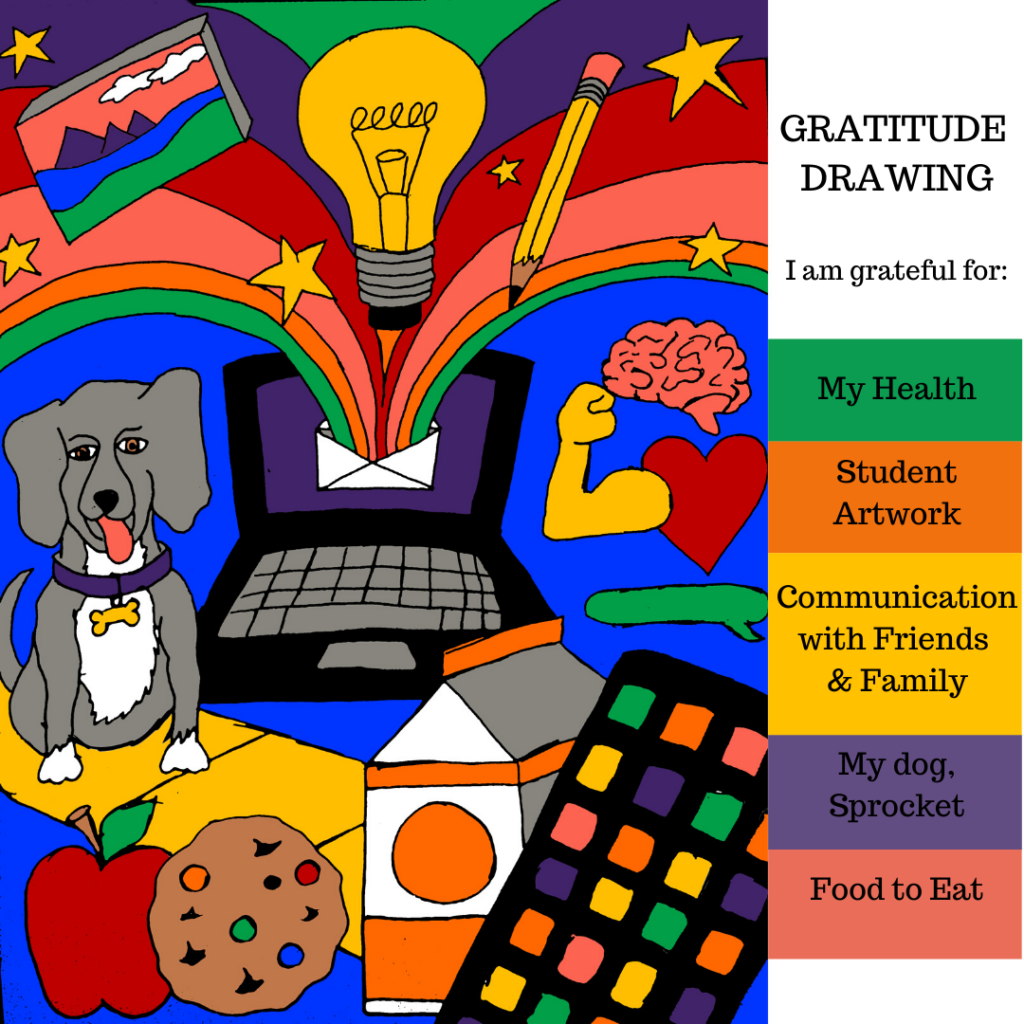
To create unity, make some illustration suggestions. Students could decide on an overall theme for their illustration that would tie everything together. For example, an artist might draw a large tree, and on each branch rests an item or symbol of something they are thankful for. Another approach would be to draw symbols for each item on their gratitude list, and then bring in design elements like shapes, lines, or a color scheme to unify the final piece. Provide students with examples of unity to demonstrate what you are looking for.
To turn in their completed assignment, students should send their illustration along with their gratitude list. While some of the symbols might be obvious, others may need further explanation or identification. This will help you learn a little bit more about your students and the things they value in their lives. More importantly, this is an opportunity for your students to take an inventory of what’s important to them. While the activity does not change any conflicts or issues they are struggling with, it can help students identify and appreciate the good that is still around them.
Reflection and Commentary
Artists all over the world are reflecting on their own experiences right now. While this isn’t a new phenomenon, the fact that we are all experiencing a global pandemic is unique. You can pull examples from street artists, illustrators, and your other favorite creators to share with students. Many artists create a commentary on what’s going on in the world around them. Some artists may take a social or political approach, while others reflect on the experience personally.
Alice L. Clark is an illustrator from the UK. She recently posted a drawing she created on her Instagram page with the caption, “This is a redo of a previous drawing, playing around with the composition still! This illustration would be the perfect accompaniment to an article on the current climate with COVID-19.” She also posted a great time-lapse video of the drawing from the initial sketch to digital completion. This is a great opportunity for you to show students how a contemporary illustrator works through the creative process.
Clark’s illustration depicts a sneaker lifted high above the pavement, with a gum-like COVID-19 virus symbol stuck to the sole. You can share this illustration with students as an example of an artist who is reflecting on a current event. Ask your students to reflect on their own experience, whether that be about the pandemic, social distancing, shelter-in-place, school closure, online learning, etc.
As many students are struggling with adjusting to a new reality, you can give them an opportunity to express themselves and be heard, or seen. Just the act of reflecting on one’s own feelings can be beneficial, and to be able to share that and articulate those thoughts in an illustration or artwork can also be really powerful.
The project has a lot of potential for discussion about how artists work, and why they create from personal and shared experiences. While your students are participating in online learning, you can still offer the opportunity for personal expression. An art classroom is traditionally a place where students feel comfortable expressing themselves to peers and to their teacher. You can still develop that safe environment through online learning.
Personal Interactions
What we are all missing from this switch to online learning is personal interaction. As educators, we know the best way to become an effective teacher is to develop and build positive relationships with our students. We do this by interacting with them in the classroom, learning their interests, and listening to their questions, stories, and ideas.
Online learning threw us all off, and at first, we may have been too focused on the content and how we would deliver the material. Let’s shift our focus to include how we interact with students as well. If all we’re doing is posting assignment instructions and due dates, then we’ve lost the personal connections. We are more than words on a page or a screen.
Take time to offer opportunities to meet with your students virtually using online tools like Zoom. Students miss seeing and hearing from you!
Ideas for virtual interaction:
- Casual chat and answer any questions
- Show off examples of student work for the week in a slide presentation
- Play a game like Pictionary!
- Do a simple artmaking demonstration, allow for student input
- Make specific comments and feedback about their artwork
Final Thoughts
Online learning doesn’t have to be just about how we deliver our content. We can provide opportunities beyond artmaking objectives. Art is a subject area that allows students to express themselves. Consider their social and emotional needs as you continue to develop online learning, and provide more opportunities for your students to reflect and share.
What are some creative ways your students have expressed themselves through online learning?
How are you personally addressing your social and emotional needs?
How are you making yourself available to students through online learning?
Magazine articles and podcasts are opinions of professional education contributors and do not necessarily represent the position of the Art of Education University (AOEU) or its academic offerings. Contributors use terms in the way they are most often talked about in the scope of their educational experiences.
